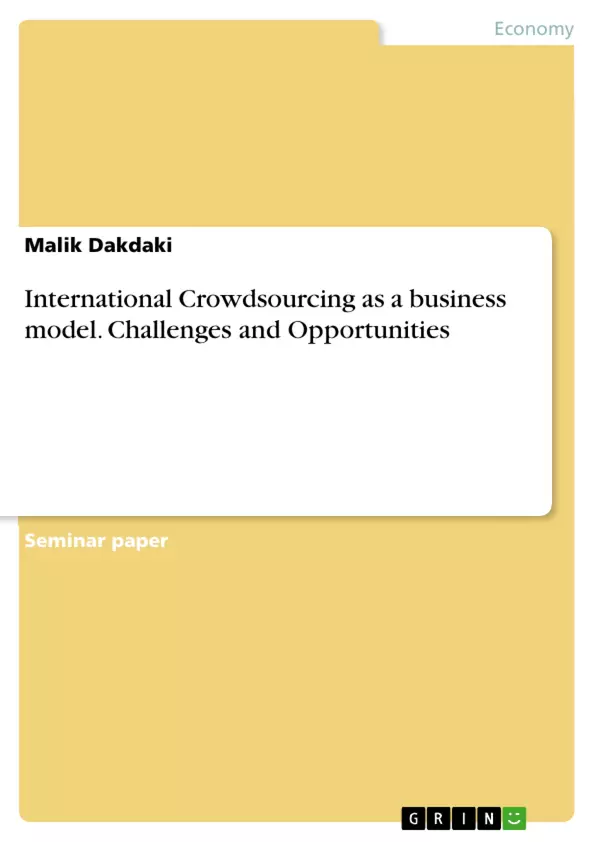The objective of this term paper is to identify the challenges and opportunities of international crowdsourcing in the business industry. Furthermore, it shows the impact on the current business models and how crowdsourcing can be used for a company to create value.
The globalization of markets in the past year have led to an intensification of competition. Due to this circumstances companies are forced to review their business processes. In order to make business processes more efficient and subsequently achieve competitive advantages it is necessary to involve stakeholders such as customers, suppliers, employees and the crowd.
Inhaltsverzeichnis (Table of Contents)
- Introduction
- Objective
- Structure
- Definitions and conceptual delimitation
- Crowdsourcing
- Outsourcing
- Business model
- Value chain model
- Impact of crowdsourcing on business models
- Challenges
- Opportunities
- Conclusion and Outlook
Zielsetzung und Themenschwerpunkte (Objectives and Key Themes)
This term paper aims to examine the challenges and opportunities presented by international crowdsourcing within the business industry. It investigates the impact of crowdsourcing on current business models and explores how this strategy can be utilized to create value for companies.
- Definition and conceptual delimitation of crowdsourcing
- Challenges and opportunities of international crowdsourcing
- Impact of crowdsourcing on business models
- Value creation through crowdsourcing
- Future developments in the field of crowdsourcing
Zusammenfassung der Kapitel (Chapter Summaries)
- Introduction: This chapter provides an overview of the increasing globalization of markets and the subsequent need for companies to optimize their business processes. It introduces the concept of crowdsourcing, its historical origins, and its significance in contemporary business practices.
- Definitions and conceptual delimitation: This chapter defines crowdsourcing, outsourcing, and business models, providing a conceptual framework for understanding the key terms and concepts explored in the paper.
- Impact of crowdsourcing on business models: This chapter analyzes the challenges and opportunities associated with international crowdsourcing for businesses. It examines the implications of crowdsourcing for business models and how companies can leverage this approach for value creation.
Schlüsselwörter (Keywords)
The primary focus of this paper is on international crowdsourcing, its impact on business models, and the challenges and opportunities it presents. Key concepts include globalization, competition, efficiency, value creation, and the involvement of stakeholders such as customers, suppliers, and the crowd. This research explores the role of crowdsourcing in various industries and its potential for future development.
- Quote paper
- Malik Dakdaki (Author), 2016, International Crowdsourcing as a business model. Challenges and Opportunities, Munich, GRIN Verlag, https://www.grin.com/document/369320



